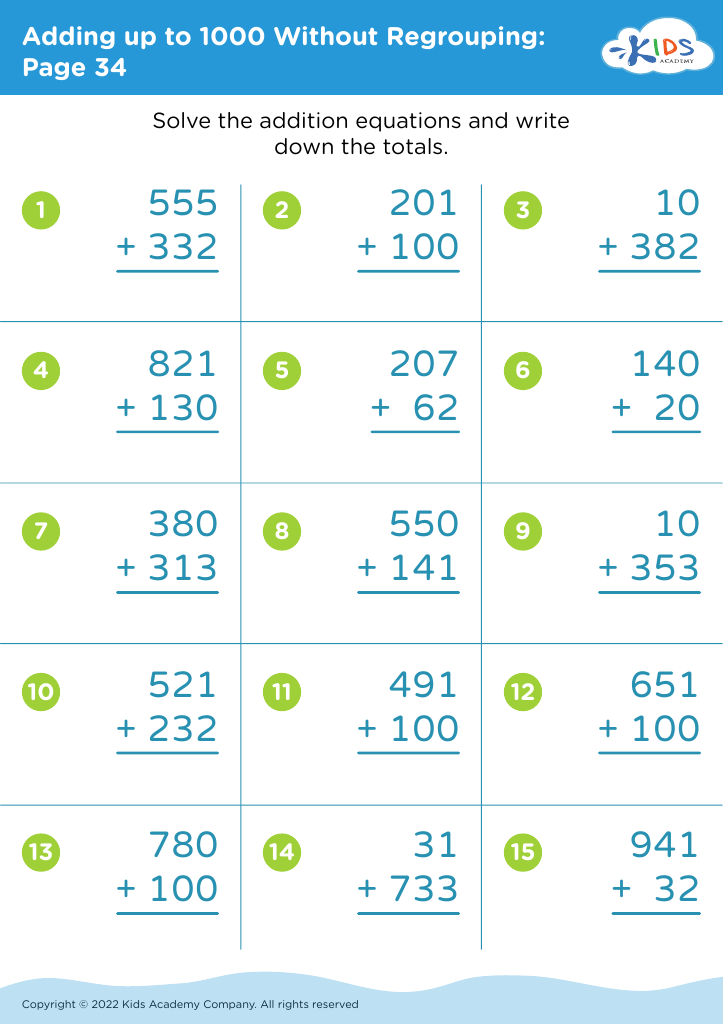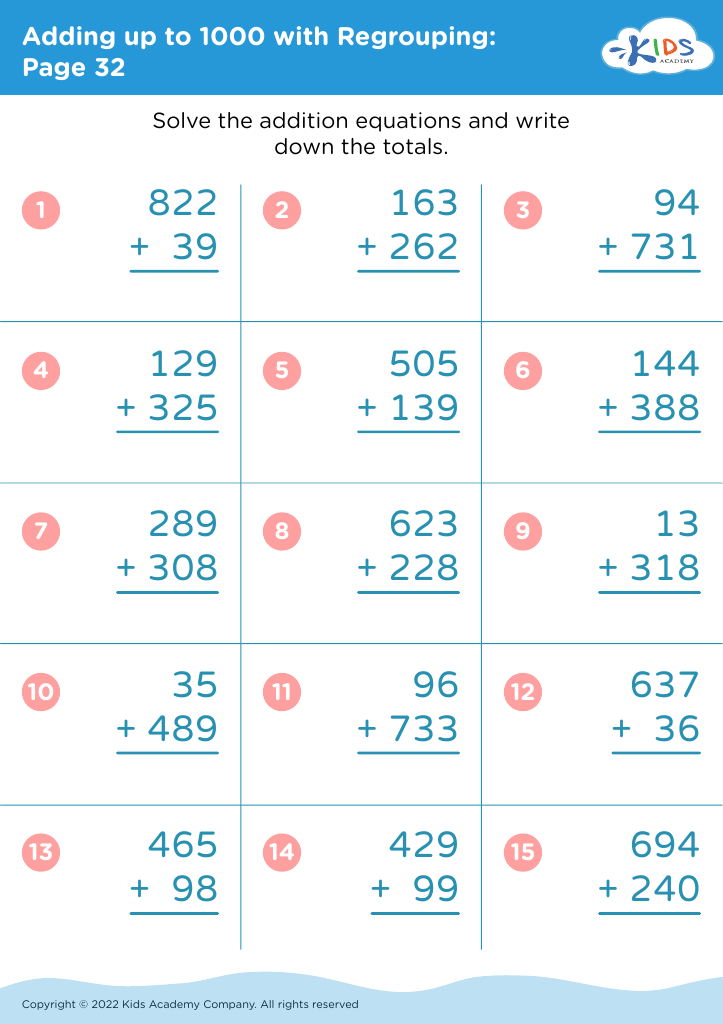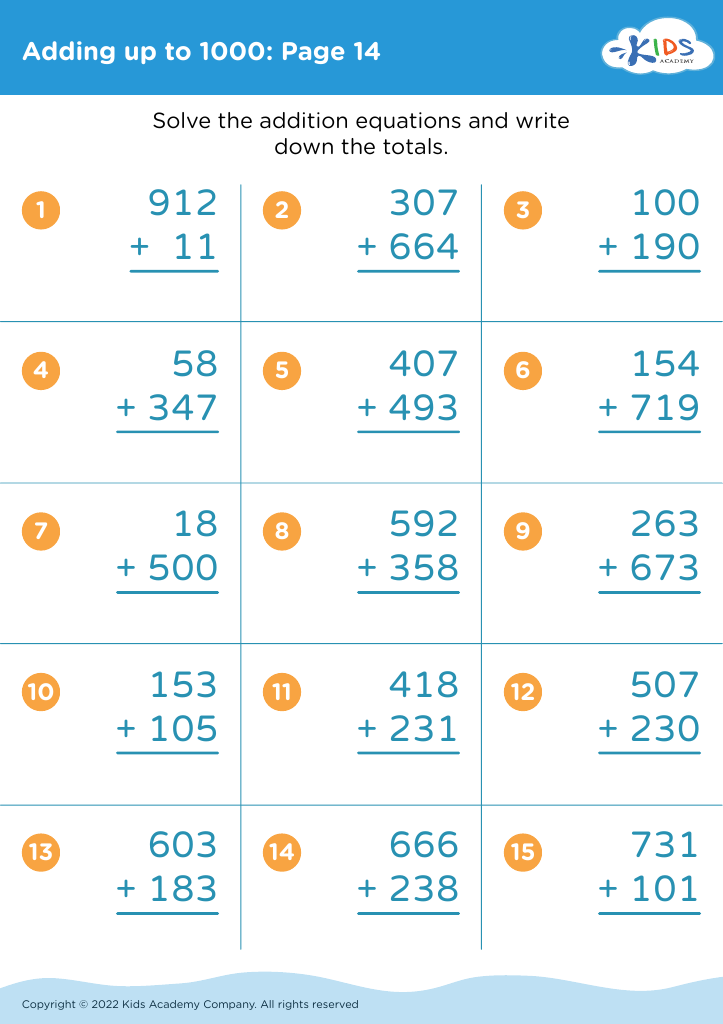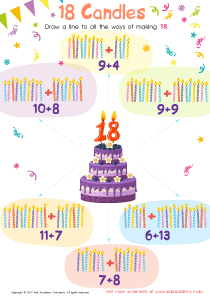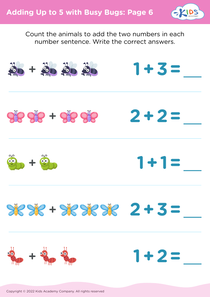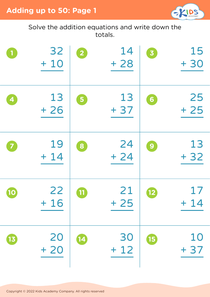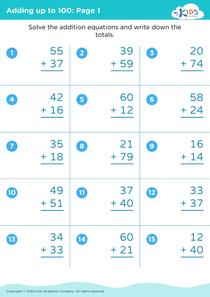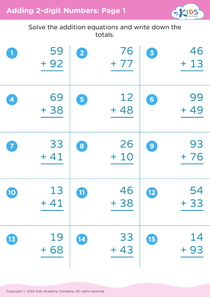Understand subtraction Adding up to 1000 Worksheets for Ages 7-8
3 filtered results
-
From - To
Discover engaging "Understand Subtraction: Adding Up to 1000 Worksheets" tailored for children ages 7-8! These interactive worksheets are designed to help young learners grasp the fundamental concept of subtraction through practical examples and exercises involving numbers up to 1000. Students will develop their subtraction skills with fun activities, enhancing their ability to solve real-world problems. Our well-structured materials cater to diverse learning styles, making math enjoyable and accessible. Perfect for both classroom settings and at-home practice, these worksheets will empower kids with the confidence to tackle subtraction challenges as they build a solid foundation in mathematics. Get started today!
Understanding subtraction and the concept of adding up to 1000 is crucial for children aged 7-8 for several reasons. At this age, students are building a strong foundation in mathematics, which serves as the basis for future learning. Mastering subtraction helps children develop problem-solving skills and enhances their ability to think critically. It allows them to understand not just the mechanics of math but also the concept of quantities and relationships between numbers.
Moreover, these skills extend beyond math class; they foster analytical thinking and decision-making abilities that children can apply in everyday situations, from budgeting pocket money to understanding time. When children can confidently manipulate numbers up to 1000, they gain a sense of accomplishment and motivation to tackle more complex problems in the future.
For parents and teachers, supporting children in mastering these skills fosters greater engagement and resilience in learning. It provides a structured pathway for continued educational development while ensuring that children can apply mathematical concepts in practical, relatable contexts. Engaging with subtraction and addition promotes a positive attitude toward math, paving the way for a lifelong appreciation for the subject and its importance in understanding the world.
